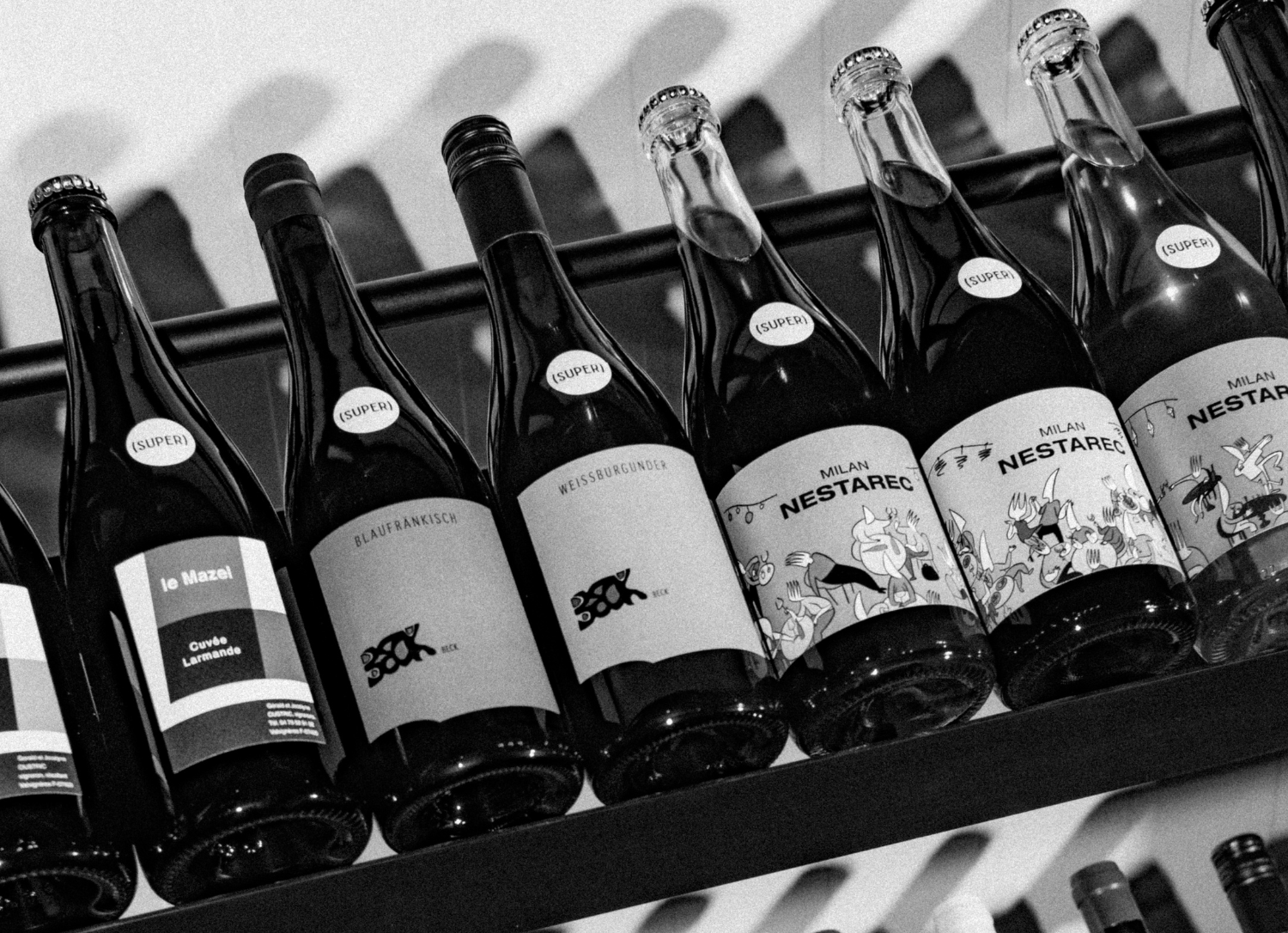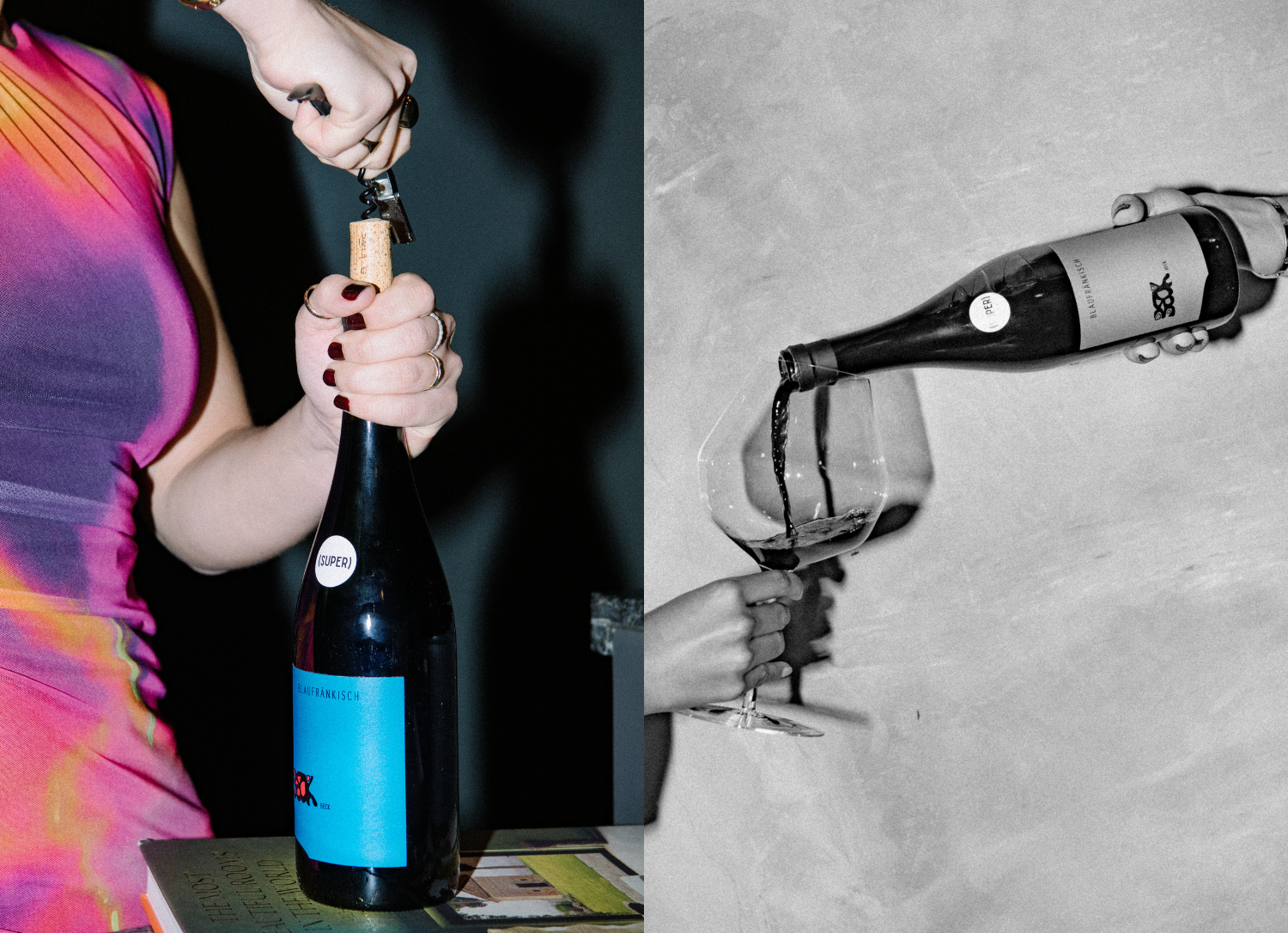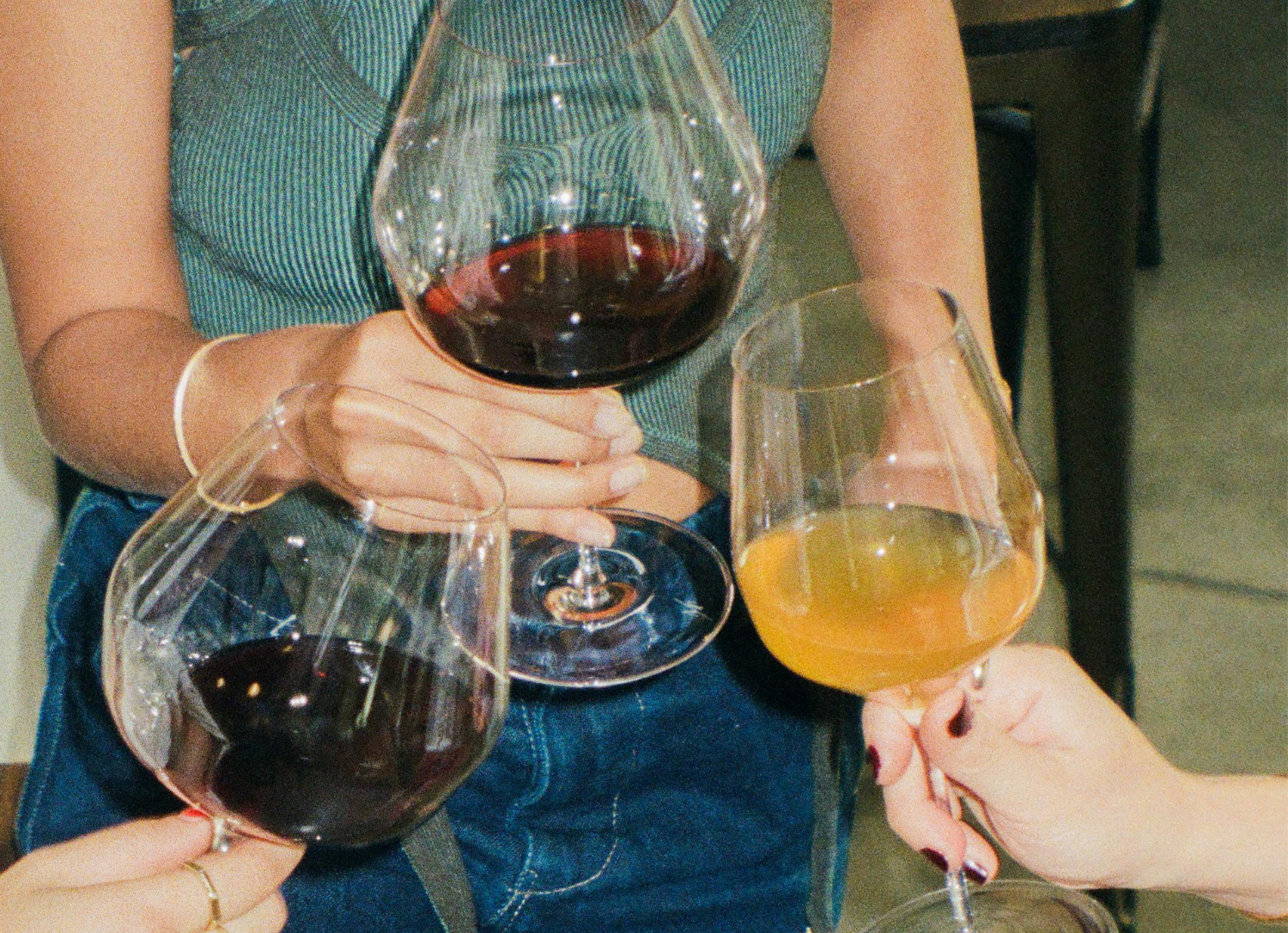When you open a new restaurant or bar here in the Philippines (be it in Metro Manila, Siargao, Cebu, or Boracay), your wine list is not always the first thing on your mind. You have the concept to consider, as well as the interiors and the food—but when it comes to the latter, it’s actually good to already think of your wine list as an extension of your menu.
Serving wine doesn’t just offer your customers a way to enhance their dining experience with great pairings: they also drive revenue for your business. Wine doesn’t need to be served in a cocktail and can easily be served by the glass and by the bottle—which means that a smart, enticing, and easy-to-read selection of wine is essential.
Here, (Super)Natural GM and resident wine expert Chie Gaerlan gives her tips to creating a good wine list tailored for a Filipino audience—-from how to choose bottles and how to present them—so you know what to look for in a good wine supplier in Metro Manila:
How to choose bottles for your wine list
Translate your concept into the wine list
Your restaurant’s concept doesn’t just extend to its interiors and food, but also its wine list. The bottles you choose to serve are an extension of the menu, and should not only compliment the food, but also reflect the tastes and philosophies you want to champion.
“If you’re opening a modern French bistro, then it makes sense for the majority of your wine list to be French,” says Gaerlan. Often, wines from a specific country are best paired with that same region’s cuisine. That said, Spanish wine with Spanish tapas or even Japanese wine with Japanese food often make for some excellent combinations.
But you of course don’t need to be limited by matching wine by country. If you are, for example, opening a spot trying to draw in a strong brunch crowd, sparkling wines (especially natural wine, for those conscious about sulfites) lower in alcohol content are a great option. For a more high-end steakhouse, more premium red wines would elevate food pairings. Consider the best choice for your concept and existing menu.
Ensure the wine complements the food
It is essential for you and your team to taste the bottles on your wine list: not only will your service staff be able to describe and upsell your wines to customers better, but from a culinary standpoint, you can also make sure which wines make different dishes on your menu really shine. A good pairing, after all, is one that makes both the wine and food taste better.
Luckily, most dishes from the same cuisine have similar characteristics—pinning down a focus for your wine list to match can be simple.
“For Filipino cuisine, this is a must and not a suggestion,” says Gaerlan. “You need to include sparkling wine, juicier reds, and food-friendly grape varieties that are high-acid and ideally, off-dry.”
Take our climate into consideration
Many guides to putting together a good wine list are often written from a Western perspective—-or at the very least, not from a country in Southeast Asia like the Philippines, which comes with more challenges when you want to shop wine in Metro Manila.
Our tropical climate is something that immediately sets the Filipino wine drinking experience apart. Metro Manila is hotter and more humid, and a bold, full-bodied red served at room temperature is definitely not the first thing that many Filipinos will reach for.
“Because it’s so hot, it’s better to favor wines that actually drink well when they’re slightly chilled,” advises Gaerlan. This is a no-brainer for ice-cold sparkling wines, whites, or orange wine—but this also applies to reds!
She continues, “Lighter varieties such as Pinot Noir and Gamay benefit from some chilling in our heat, and a bit of coolness offers some of the refreshment that Filipino diners look for when they’re eating out.”
Focus on wine you have the storage for
The key to avoiding wine spoilage is proper storage. Aside from placing your wines in a cool dark place with minimal changes in humidity and temperature, it is important to account for the needs of specific bottles.
“Wines with cork closures must be stored horizontally, while screwcaps do not need this and can be kept vertical,” explains Gaerlan. Wines that are sealed with corks can dry up and over-oxidize the wine if the bottle isn’t stored lying down—if your wine storage has a very limited capacity to allow for this, you may want to focus your wine list on screwcap bottles.
Make room for price tiering
Customers often have a specific budget in mind when they want to order a bottle of wine—not everyone has a special occasion to celebrate, after all. It pays for your wine list to cater to a wide range of budgets.
“I would recommend that you have entry-level wines you can price from P1,500 to 2,500, mid-range wines from P3-6,000, and a few bottles on the higher end,” explains Gaerlan. This tiering is wide enough that more casual diners wouldn’t be scared away by the wine list, while those looking for something more special will find it. Just be sure not to organize wine by price!
Include wines for conservative and adventurous drinkers
In the same way that customers don’t all have the same budget, they also won’t always have the same mileage for adventure in a glass: some will prefer more classic wines to go with their food, while others will prefer something well off the beaten path. The best course of action: have a bit of both.
“A good wine list has to have the classics,” says Gaerlan. “These are wines from popular, established regions like Bordeaux, the Loire Valley, Napa Valley, or Rioja. However, it’s also important to have wines that appeal to more adventurous drinkers, as well as wines that are friendly for people actually trying wine for the first time.”
Take your clientele into account
The final word on what you should include in your wine list will always be dictated by your clientele. Who exactly are the people you expect to drink and dine at your establishment?
“You need to understand your audience so you can create a wine list that will appeal to it,” explains Gaerlan. “If you’re situated in BGC, you may expect more upwardly-mobile customers looking for a more diverse selection. If you’re in a happening area for nightlife like Poblacion, you’d want to include more adventurous wines for a younger, hipper crowd. Meanwhile, a fine dining restaurant would likely attract people celebrating special occasions they may want to mark with a great Bordeaux or Burgundy, if not a bottle of Champagne.”
How to make your wine list for appealing to customers
Categorize your list properly
“The best ways to organize your wine lists are according to country and grape variety,” says Gaerlan. The main grape variety of your wine can tell customers a lot about the bottle they’re about to order—but on the downside, organizing this can get complicated when you have blends or simply a large number of wines on your list. Region, meanwhile, is a little more all-encompassing and will make it easier for a customer to find what they’re looking for, and shines best with a little more explaining from your service staff. What works best may depend on your demographic.
However, smaller restaurants don’t necessarily need to follow this convention. Gaerlan says, “If you have a shorter wine list, you can categorize by style—like red, white, rosé, orange, dessert, or sparkling.”
Offer rotating by-the-glass selections
Life is easiest when a customer orders a bottle of wine, but being able to offer wine by the glass is also essential for any restaurant. However, just sticking to the same wines is not the way to go.
“One thing where Metro Manila is so behind versus abroad is that our by-the-glass selections are small and never change,” comments Gaerlan. If you only have two wines available to have by the glass permanently, it decreases your chances of a customer ordering it on a return visit—or not ordering at all due to the simple lack of choice.
“It would be most ideal for any restaurant to have four to eight by-the-glass options at any time, which could change as often as every quarter” Gaerlan recommends. This keeps your wine list fresh even for repeat customers, and if they liked a wine enough the previous time they had it by the glass, they may decide to order a whole bottle this time.
Ensure your information is complete and easy to read
A wine list should make it as easy as possible for a customer to understand what bottles you have available. Like we said earlier, there should be proper categorization—and beyond this, you need to ensure you include pertinent information like vintage, country or region of origin, and variety. If you have the extra space, you could also include a description or simply state the style and flavor profile of the wine. Is it a light red, an off-dry sparkling wine, or a bolder orange wine?
Beyond having this information, it should also go without saying that neatness also plays a big role in making it easier for your customers to skim through the list. A huge wall of text will always look intimidating, so be mindful of how your wine list is laid out.
Use soft language for wine descriptions
If you aren’t a high-end or fine dining establishment, there is a much higher chance that your customers aren’t very well-versed in the world of wine—in which case, you would still want to encourage them to try a wine by adding a short description to give an idea of what they’re in for, the way you would for a new dish.
“Avoid technical language if you are not a fine dining restaurant,” Gaerlan advises. “I’d recommend a brief 1-2 line description—it could be a sentence, some short phrases, or even a list of tasting notes—as well as food pairing suggestions.”
For example: If we were to list Judith Beck’s Koreaa 2020 vintage on a wine list, we could say something as simple as “Tasting notes: Melon, pear, pineapple, herbal spice. Best with Thai papaya salad.” Alternatively, we could also get more creative with a description like “This is summer in a glass, with refreshing acidity and big notes of tropical fruit and citrus! Great with our kinilaw.” This is another opportunity to show off the personality of your restaurant!
When in doubt, consult an expert to help you build your wine list
As we’ve shown, building a good wine list for your restaurant or bar can be complicated—there are many factors to consider, from budget and popularity to simple suitability with the food you plan to serve. All this said, the best and most convenient way to build a wine list (especially in Metro Manila) is to consult an expert.
(Super)Natural isn’t just an online wine store where you can shop natural wine: we’re also an importer, distributor, and supplier of natural wine based in Metro Manila. Whether you’re handling a restaurant, bar, or a store, our WSET-certified team has the skill and knowledge to recommend and supply natural wines tailored to enhance your concept and menu—and on top of that, we also provide complimentary wine service training!
Reach out to us at cheers@supernaturalwine.ph to start building a smart wine list for your business, from designing it and finding a supplier to even training your staff for wine service.



